Life is constantly changing and sometimes there are times when we need more space. Events such as the birth of a child, setting up a home workspace, elderly parents needing more attention almost always come with the need for extra space to maintain the same quality of life. Those who live at home are privileged because the need for new space may not involve moving house. They can extend or loft the house and end up with considerably more space. One of the quickest and cleanest ways to do this is by building with prefabricated wooden structures.
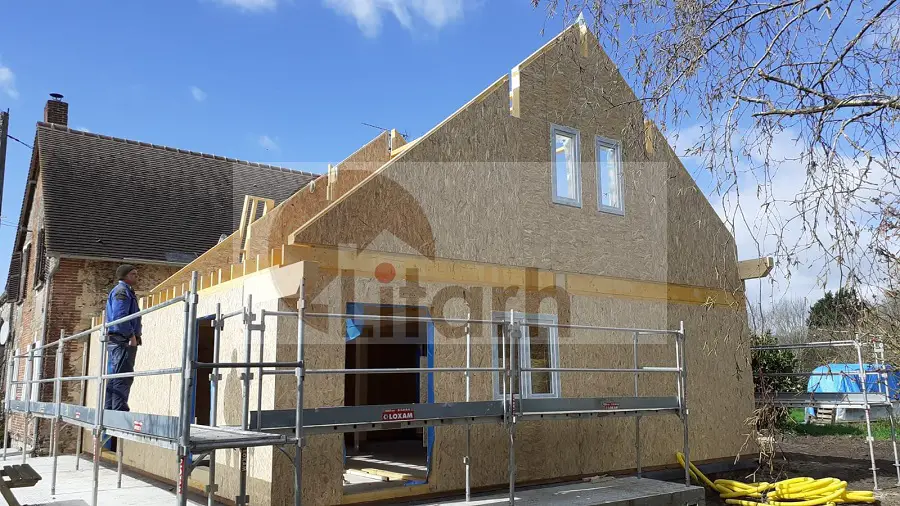
Litarh, builder of houses on wooden structure in the Valley of Moldova, has had such projects mostly abroad. Foreigners are much more open than us to this way of building and prefer it to the traditional ways, especially as land for a new house is expensive and increasingly hard to find. From simple attics and extensions, to building a one-storey house incorporating the old house or extending a 19th century house, everything has been made possible by the flexibility and safety of prefabricated wooden structures. Vlad Liteanu, director of Litarh, recently returned from France from an extension to a 19th-century house in Courcelles les Gisors in the Oise region. From him we learned why foreigners choose to extend and attic houses using wooden structures. Here are just 5 of their arguments.
Short working time on site
The problem with lofts or extensions is that people already live in the house. A building site that lasts for months is the last thing they want. Even more difficult is when it comes to vertical extensions. The house has to be stripped, and a long time without a roof means seepage from the rain, which can lead to less than pleasant consequences.
When working with prefabricated wooden structures, most operations are done in the factory. The walls, in addition to the insulating material inside, may have windows and doors fitted or may be finished on the outside until clad with panelling. On site, these walls are only installed following the instructions in the project. Everything is very well calculated so that the fit is exact and no additional work is needed.
In addition, on a site where prefabricated timber structures are being built, there is no downtime on a regular site, such as the time needed to harden the concrete. The floors and walls are ready built and the only time needed is for assembly. You can have the entire floor assembled in one day and the extension completed on the outside in less than a week. Working time on the roofless house is greatly reduced and the risk of infiltration very limited.
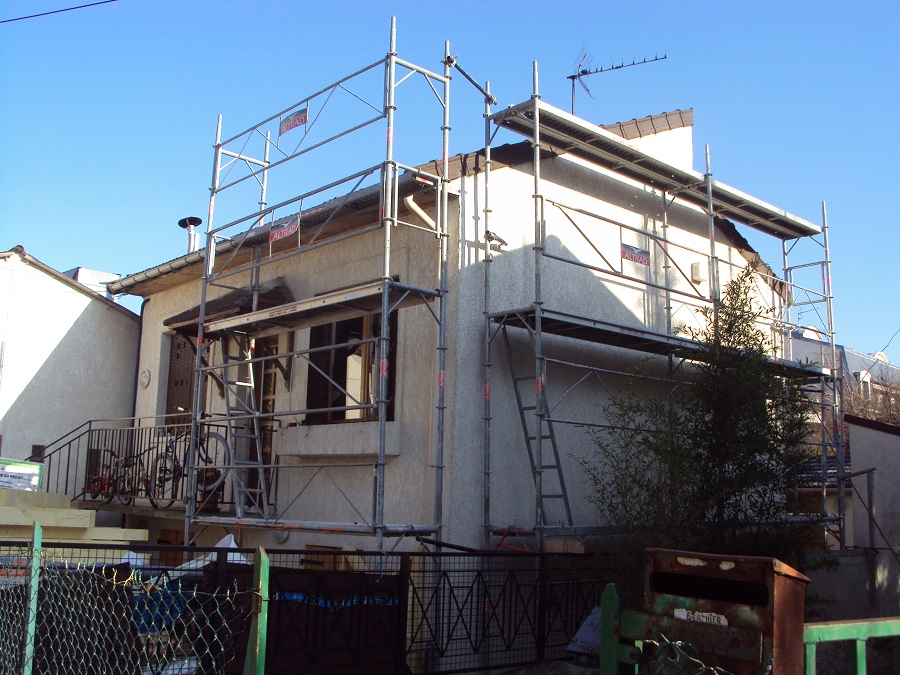
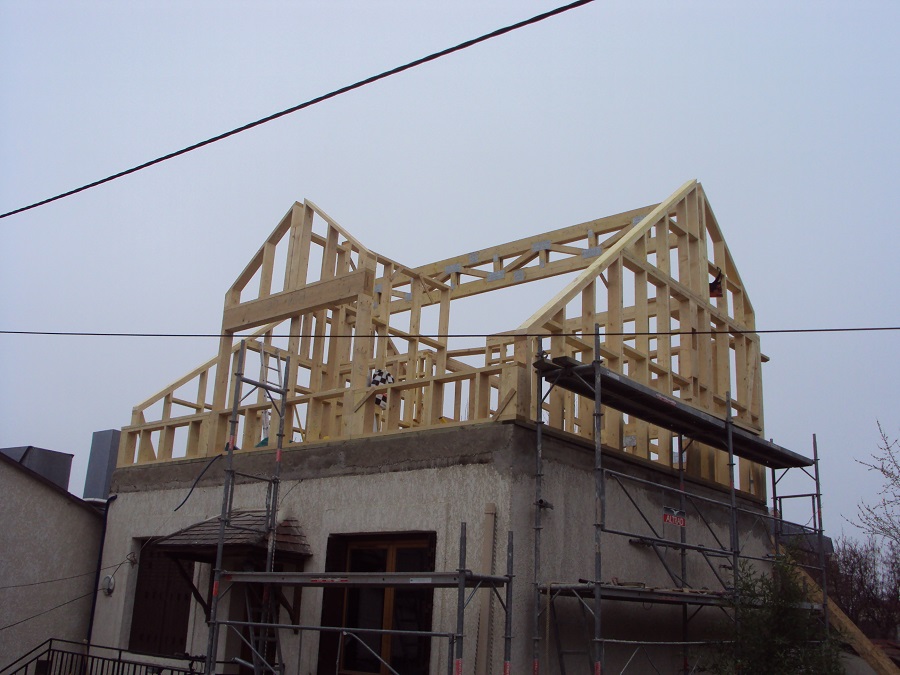
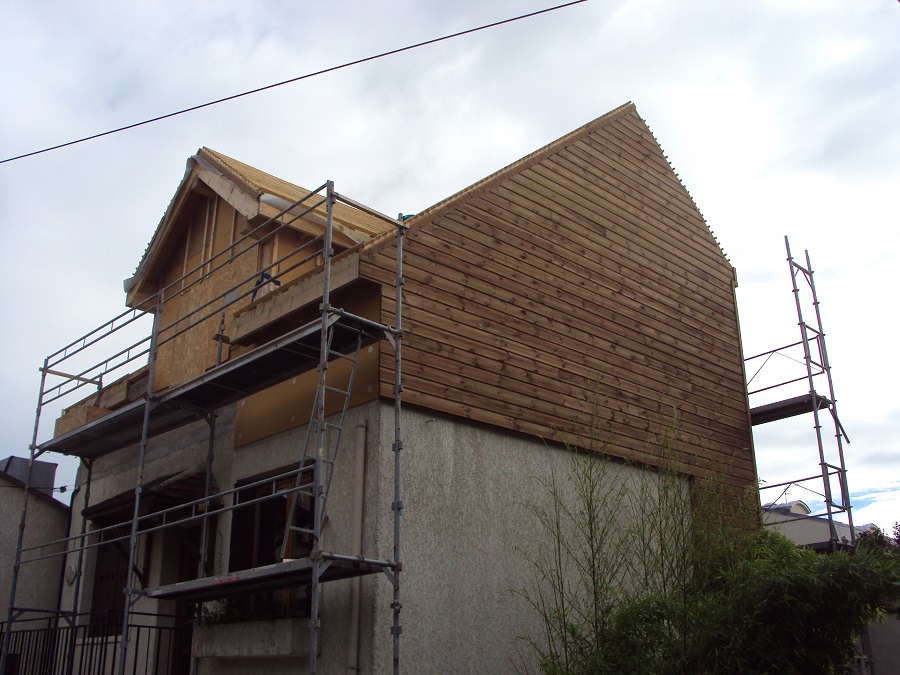
Clean site, no waste
Mansarding or extending with a company that builds timber frame houses starts with a project. Everything is very well calculated and sized so that the walls and floors end up fitting together perfectly. The more advanced the prefabrication, the more precise everything is. That's the essence of this work. If the walls didn't close perfectly, the whole job would be compromised. All this precision also results in a very clean site. There are no wood scraps or insulation materials because they are included in the prefabricated structures right from the factory. All the waste from such a construction site ends up in a few bags. Everything is clean and runs with minimum disturbance.
Even if the walls were to form on site, there would not be as much waste as a traditional construction site. There are no empty bags of cement, reinforced concrete rubble, scrap iron and other such debris. The wooden structures (posts and beams) are made in the factory according to the design and the smaller pieces of insulation are reused, so they do not go to waste.
Buildings with prefabricated timber structures are lighter and independent in terms of strength
It is known that wooden structures are much lighter than brick or concrete. The walls of your house may not even be able to withstand an overhang made of traditional materials, but there is no problem if the floor is built on wooden structure. And no, don't think that lightweight means windy. This type of construction is very popular in Europe, the USA and Canada, so strong fastening systems have been developed. There are plenty of connectors that securely fasten the attic or floor to the basic construction, totally eliminating the risk of wind damage.
Nor do extensions need very complicated fastening systems. They are designed and built as stand-alone systems (a house in itself) and do not need to attach to the old construction to be resilient. Because of the multiple finishing possibilities the exterior appearance will be that of a unitary, "one piece" house, although in reality it is two adjoining buildings joined together only by crossing points. The "independence" of the buildings also has the advantage of preserving the strength of the walls of the old house, which are not being subjected to any intervention to fix them. This is how the extension of this old house in France was conceived. The new wooden structure is completely independent of the old structure in terms of strength.
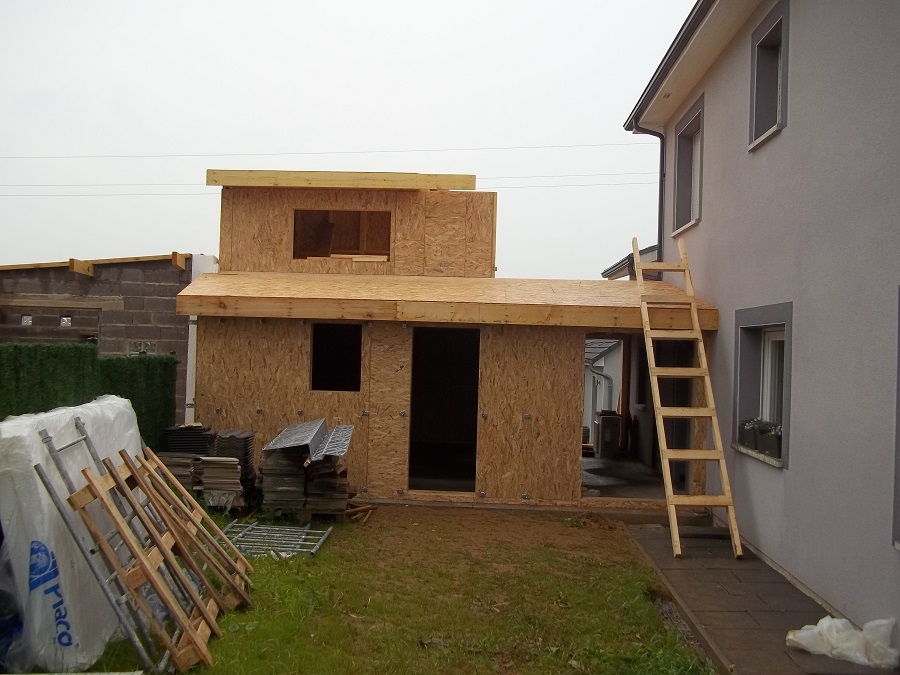
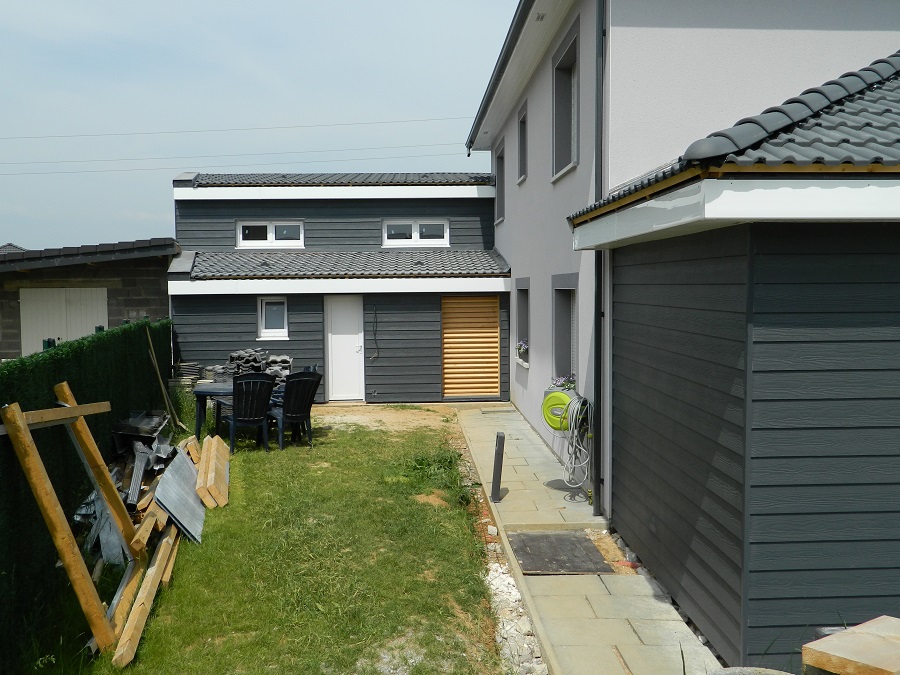
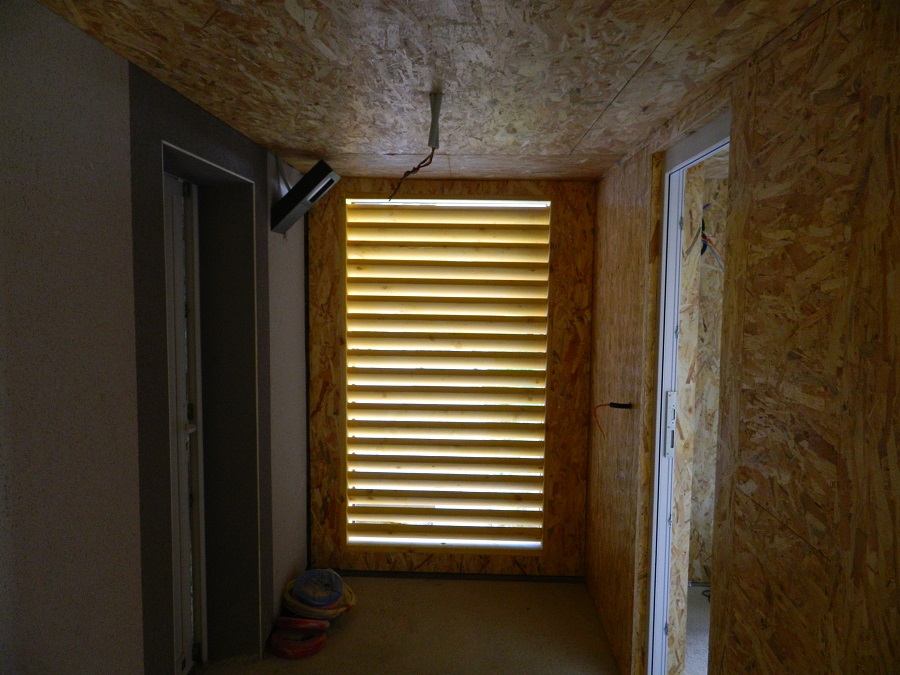
The additional advantages of building an extension or attic on wooden structures would be the increased possibilities of insulation and energy efficiency.
Energy efficiency in homes is an important requirement now. Reducing their energy losses is regulated in the European Community, and since the end of last year, no building permits have been granted in our country without energy efficiency calculations.
Wood structure walls are inherently more energy efficient. The thick layer of insulation inside the wall, the insulation mounted on the outside, all the systems for fixing the walls, windows and doors are designed so that energy losses are minimised. In addition to the increased comfort and substantial reduction in heating (winter) and cooling (summer) costs of these homes, good insulation also comes with a reduction in acoustic discomfort.
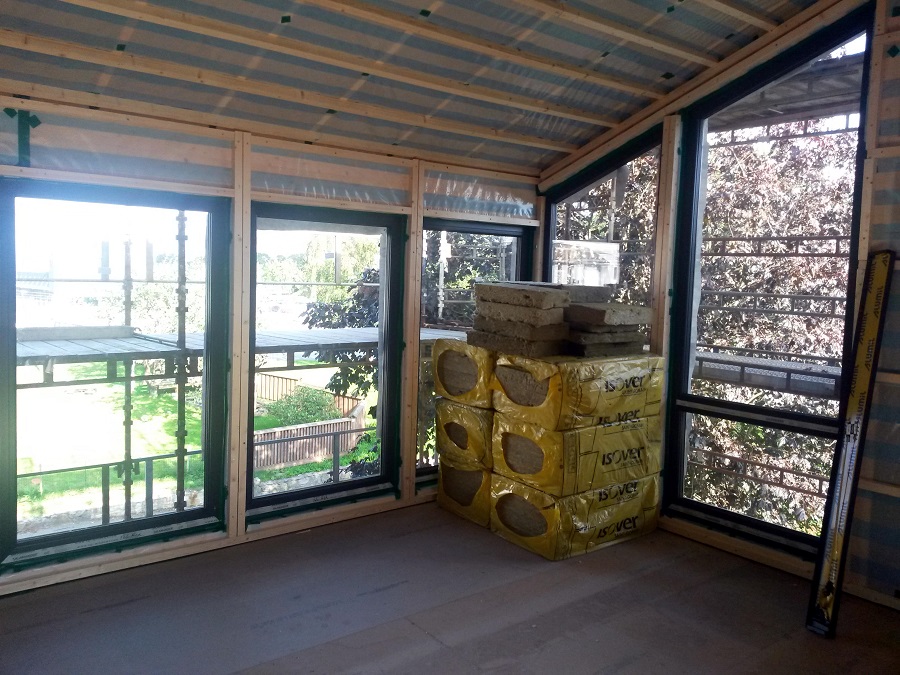
Simple combination with masonry or metal
Timber structures are very flexible and can be used to extend all types of construction. Whether brick, concrete or metal, the timber structure performs very well and can be clamped or joined without any problems. Flexibility also applies to the exterior finish. A timber frame house doesn't have to look like a timber house if you don't want it to. It can be plastered and painted identically to the original house. And if large glazed areas are desired, laminated beams are perfect. Their strength allows much larger openings than can be made with traditional building materials.
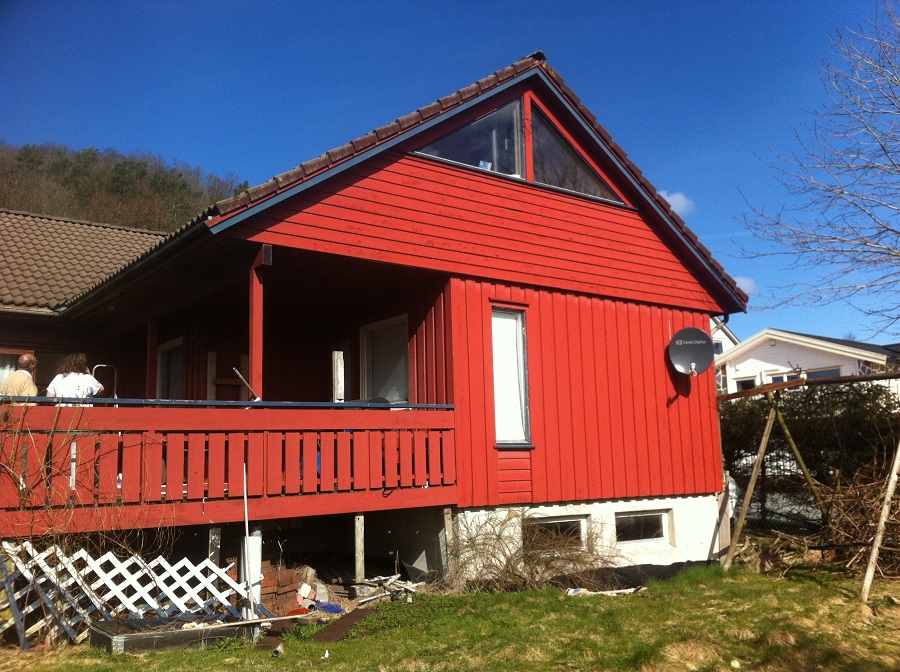
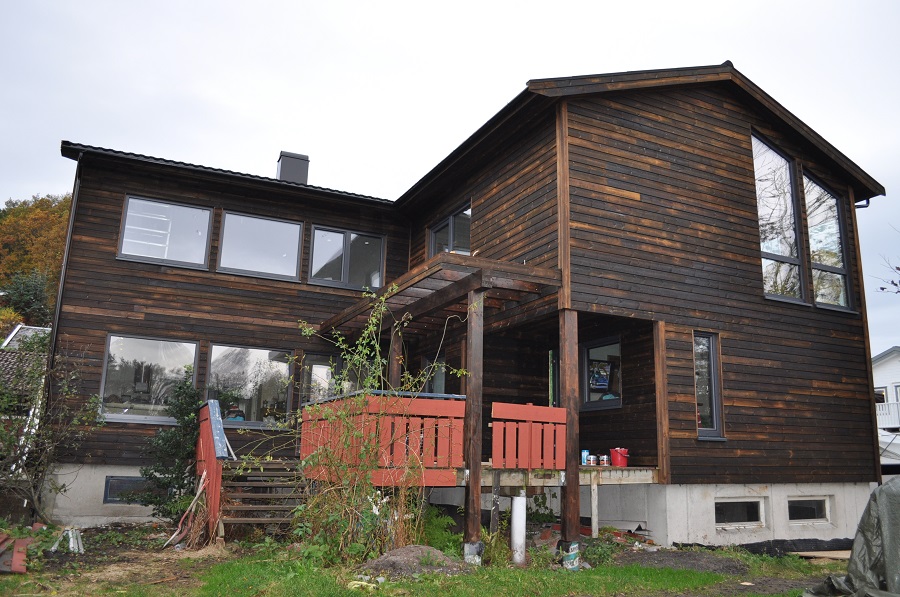
The photos in the article are of Litarh home extensions in France and Norway. They are completed years ago, and the owners are pleased with the new space added, the short time spent on site and the liveliness of the construction. Unfortunately we don't have any photos of the end of the 19th century house extension. In the meantime the COVID-19 story intervened and the work stopped. It will be completed as soon as this period passes and work will resume. And we will, of course, come back with photos.




















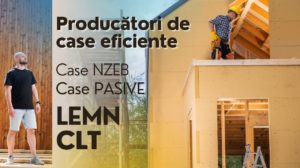
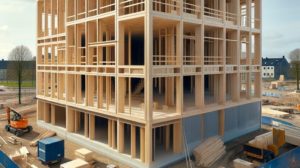

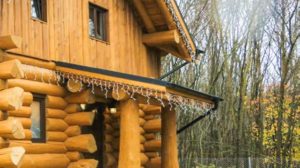

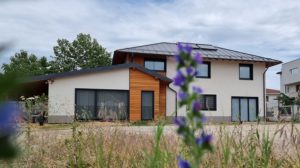
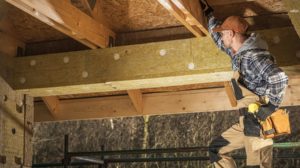

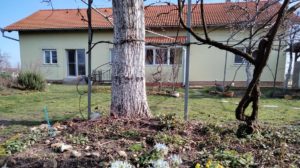

I lived for 16 years in a wooden house made on a cabinet structure with osb and plasterboard closures, with cashmere mineral wool insulation. It was a wonderful 16 years, grew children there, I recommend such houses, they are wonderful. I am longing for it, I sold it because someone paid me an unbeatable price for the area it was in.
Hello!
Thanks for the feedback. We want to present the advantages of this type of housing and the experience of someone who has lived in a house on the structure is very welcome.
All the best!
Have a nice day! We are planning to renovate our existing old house and possibly, if the structure fits, extend it with a wooden floor. Can you assess the structure of the existing house if you can build on it? If so, how much would it cost? It would probably add about 70 - 80 sq m. I am asking for a quote.